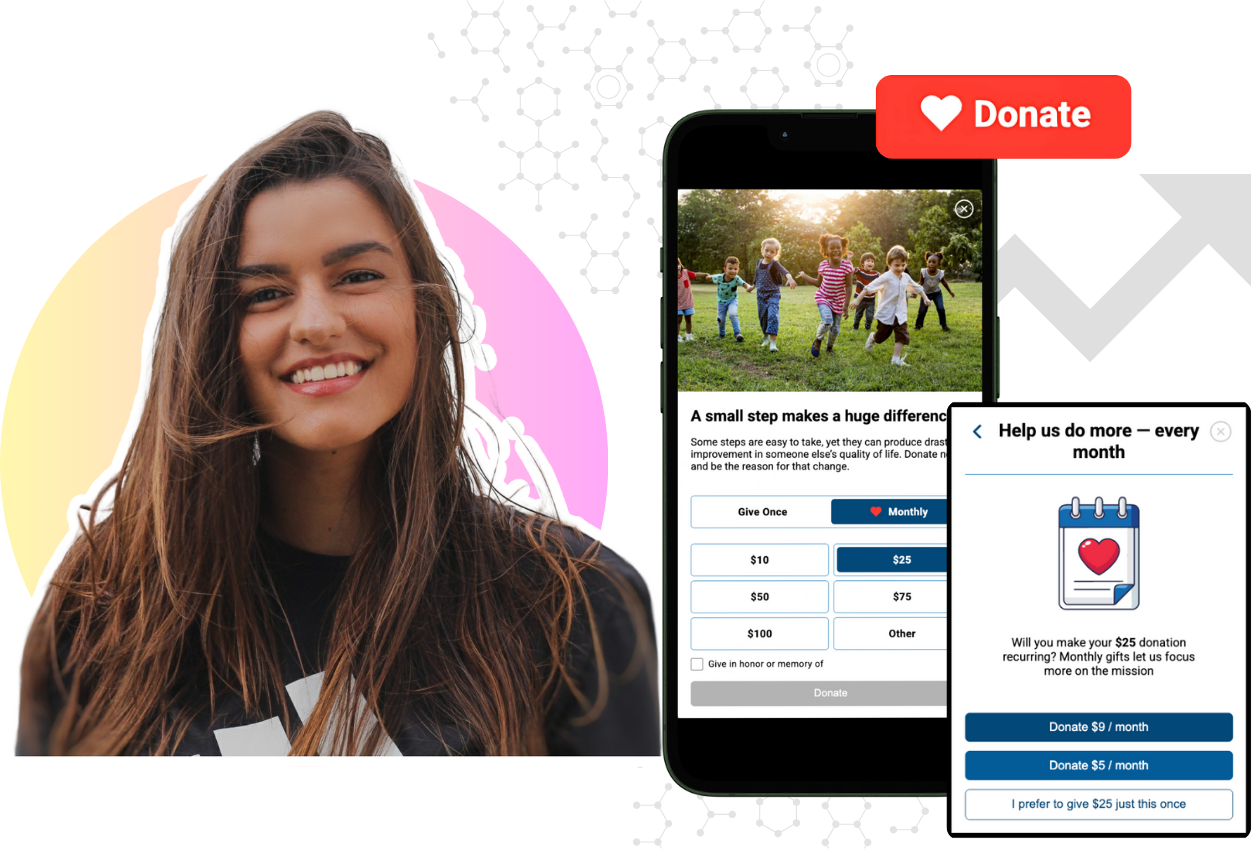Donors Want to Feel Connected
The busier and more crowded our lives become, the greater the gap between what remains important to us and all the other things seeking our...

Mobile-First Pop-Up Donation Form
Launch mobile-first pop-up forms in minutes, use built-in tools to capture more donations, and optimize the giving experience—no dev team required.
New to online donation pages for your nonprofit? Start here.
Donation page A/B testing - no science degree needed.
Keep your donation page loading fast - and drive higher conversions.

The 4 Types of Online Donation Experiences
89% of donors leave without giving. Learn how to use the right donation form to close the gap and boost conversions.

If there’s a key marker of where nonprofits stand today in terms of making progress in their fundraising, it’s the figure of 2%. That’s the percentage of disposable income Americans give to nonprofits annually. We’ve been stuck at that number for decades. Why is that? What do NPOs need to do to finally move the needle on that number?
The answer lies with innovation. And the way businesses in every industry – not just nonprofits – innovate is by adapting to what’s happening now. Breaking through the status quo for NPOs starts with a close look at today’s donors, learning what defines them, and then adapting their approach to fundraising based on what they learn about their donors.
To look at today’s donor means looking at who they are in their day-to-day lives: they are today’s “empowered consumers.” What we find is actually quite familiar to all of us. The changes brought about by innovation are all around us, every day, in all kinds of ways, as consumers. Consumers today live their lives in networks, where they can tune in to things they care about. Whether it’s buying a book, watching a movie, purchasing music, or how they communicate with their network, the powerful interplay of innovation and adaptation is so ubiquitous that today’s consumer considers it commonplace.
Today’s empowered consumer has been thoroughly conditioned by this experience – by the incredible ease with which they can do all kinds of things. They expect the fundraising experience to be as smooth as selecting a movie on Netflix.
And that’s where the “chasm,” as I call it, appears between today’s donors and today’s nonprofits. It’s a case of institutional inertia. Data silos tied to disjointed systems, excessive time spent on donation management, outdated marketing strategies, a lack of testing and experimentation, and resistance to upgrading investment infrastructure – these are all too common among NPOs.
It’s not just innovation that is required for nonprofits to cross that chasm, and they can. If we as an industry are going to put innovation to work as a positive, disruptive force for change and truly move the needle on giving, a transformation has to occur inside the organization.
It isn’t just acquiring the latest, shiniest technology. We have to think differently about how we organize ourselves, about our current state of best practices throughout the organization, how we organize workflow, and evaluate our knowledge management systems. In short: how can we reimagine and radically improve the donor experience and, with it, long-term donor engagement?
I don’t mean to suggest any of this is easy. It isn’t, of course. Nonetheless, it is the admission price for any NPO that wants to climb out of the 2% trap and enter a new level of success as an organization.
This level of innovation, in change management for nonprofits, hinges on key principles including:
Becoming an innovative nonprofit requires taking the steps necessary to realize a donor-first mentality. Putting donors first takes meeting them where and when and how they can be found. Once you get that right, you’ll have entered a new realm as a nonprofit organization. The future of giving is primed for a giant step forward. So, the next question is: Where do we go from here?

The busier and more crowded our lives become, the greater the gap between what remains important to us and all the other things seeking our...

While it may not be “news,” recent data on giving in America paints a troubling and persistent trend. Reports show that fewer than half of American...

Technology and people are inseparable today. That seems obvious, of course. We’re all so accustomed to the myriad of ways technology influences our...